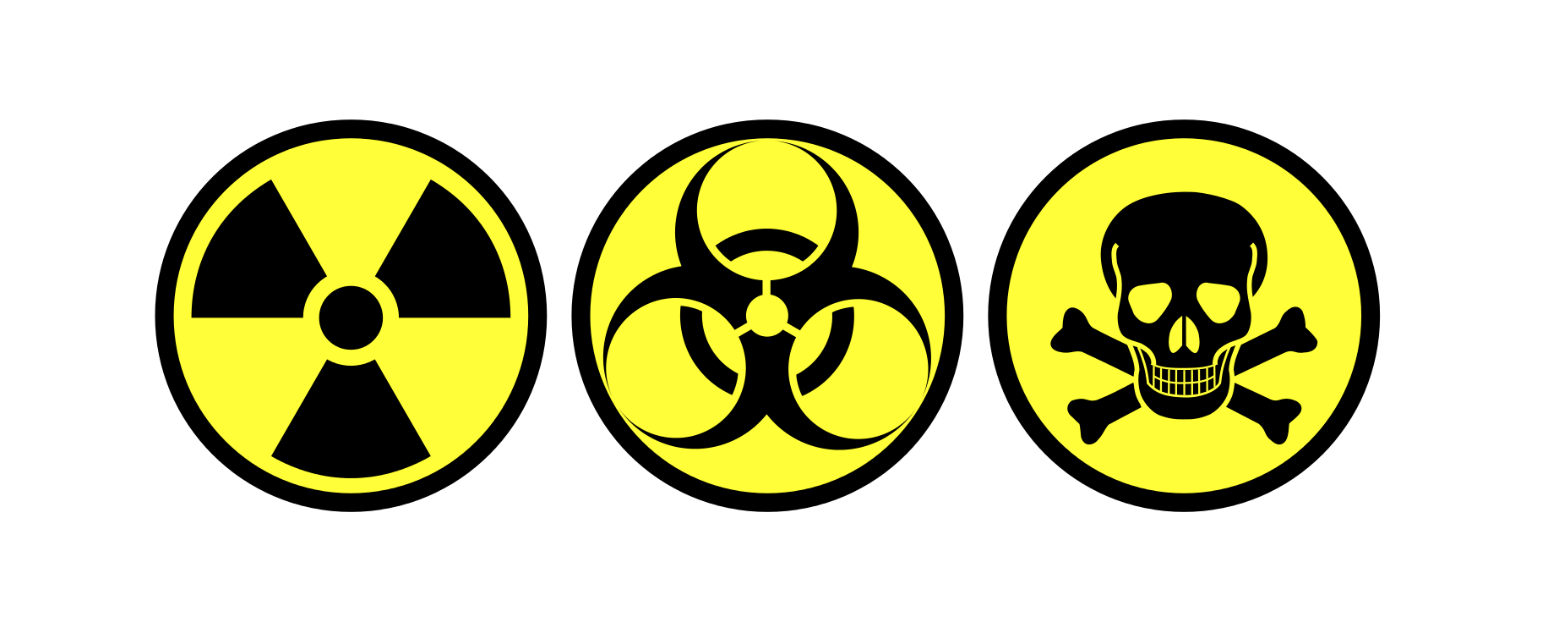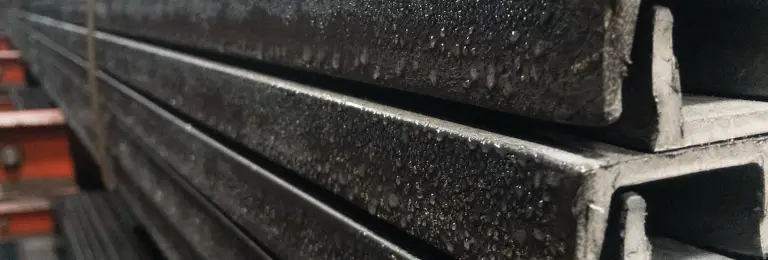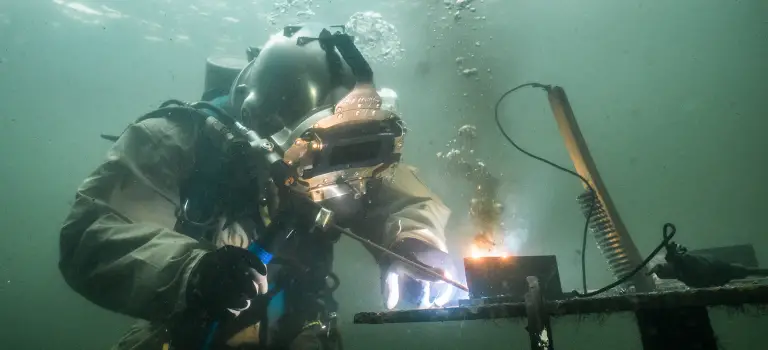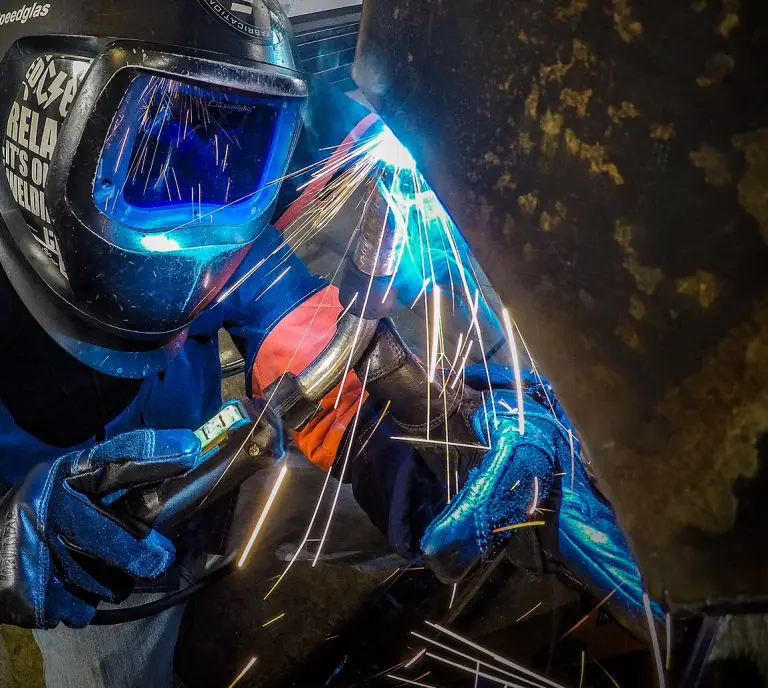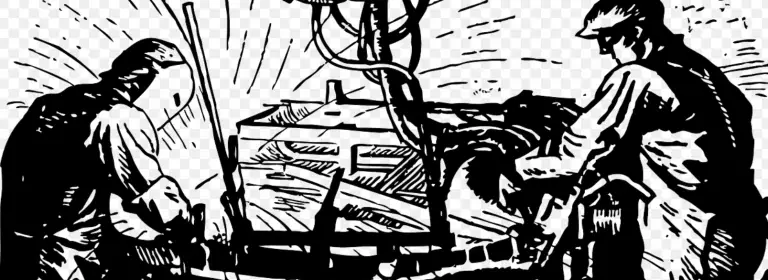Types Of Welding Hazards To Be Aware Of
This post contains affiliate links.
Although welding is a great career and an enjoyable hobby, there are quite a few potential hazards that come along with it. If you aren’t careful while performing the different welding processes, there could be serious consequences.
Despite the range of hazards involved with welding, it is relatively easy to stay safe on the job site. Proper PPE and common sense goes a long way, and can help prevent a serious injury to you or others.
This article will outline the most common hazards that welders face, and the best ways to easily avoid them. If you haven’t faced a serious injury yet, it is important to keep that streak going.
UV Damage
Welding arcs produce very strong UV rays that can leave you with a burn similar to a sunburn. This is the reason why welders wear hoods, jackets, gloves etc. As you jump into higher amperage processes, the UV rays become stronger and stronger – and can lead to even worse burns.
You may not notice that you have some skin exposed, but after the course of a work day you will definitely see and feel the burn. Make sure to have proper welding clothes that fit well and cover your entire body. These UV burns are very painful and take some time to heal.
The area between your welding hood and your jacket collar is a very common place to get a burn – which is why we often wear bandanas.
This is why it’s important to never risk having any exposed skin while you’re welding. Even a small gap between your jacket and your gloves can allow for a bad wrist burn. Always check that you’re completely covered before you begin welding, and you will prevent the UV rays from harming your skin. Darker colored clothing also tends to protect against UV rays better than lighter colors.
Skin Cuts
Angle grinders and bandsaws are very common tools that welders use to cut steel, stainless steel and aluminum. Although these tools can make quick work of projects, they can also cause a serious injury if the operator isn’t careful.
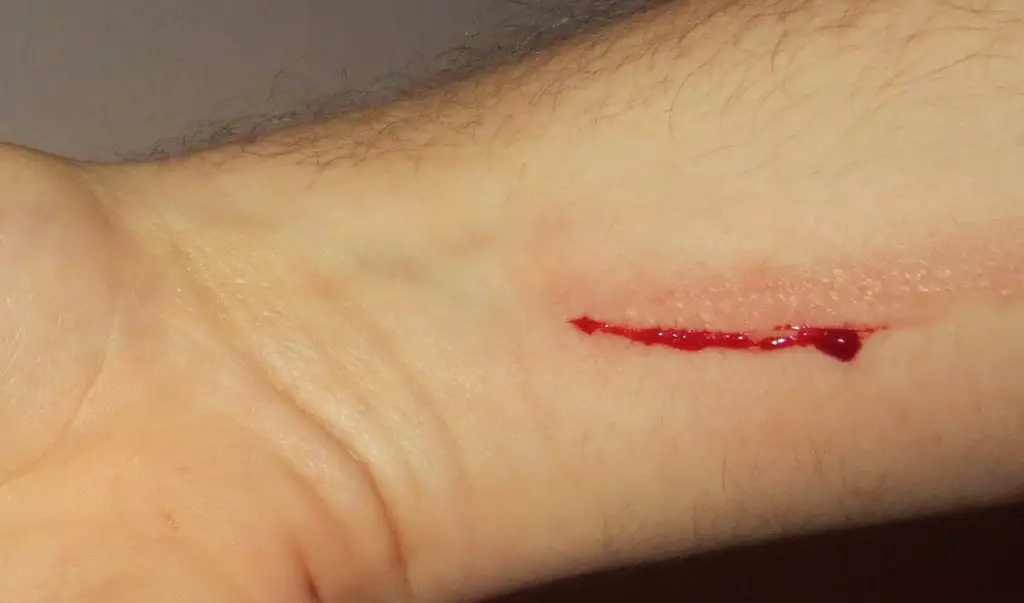
Angle grinder attachments can perform a wide variety of tasks. Fine resin discs can polish metal, and rougher hard wheels can remove material very quickly. However, cut off wheels are the most dangerous in our opinion. These thin wheels are rotating just inches from your hand, and one wrong move can slice you pretty bad.
Angle grinders come with guards to help combat this, so we always recommend keeping the guard on at all times.
Also, grinder attachments can fly off if they are not tightened properly in the first place. This is where things get scary because the welder has no idea which direction it’s going to go when it flies off. For this reason, always use your tightening wrench for your grinder and make sure that the attachment wheels are installed properly.
Bandsaws can also be pretty dangerous. They can make very accurate cuts on metal, but they can slice a finger off in an instant. When you’re using a bandsaw, always take care to keep your hands as far away as possible – and make sure the blade stops spinning before you reach for your metal.
Smaller bandsaws such as port-a-bands are handheld saws that can make quick work of projects. These are known to kick back on the user if they aren’t held firmly at the right angle. It is wise to have an experienced welder show you how to use one before you give it a go.
After the cutting process is completed, there are often tiny burrs on the edges of the metal that are hard to see. These often cause cuts to happen as well. It is good practice to de-burr your material with an angle grinder after you are finished cutting.
Eye Injuries
There are many ways to injure your eyes while performing welding processes, but a good pair of safety glasses goes a long way in terms of proper protection. Wearing safety glasses at all times will help prevent the risk of an eye injury, but it doesn’t guarantee it 100%.
For starters, the UV rays mentioned above can cause similar burns to the eyes as well. This is why it’s important to make sure that you are using the correct lens shade in your welding hood. Shades from 9-13 are used depending on how high your amperage/voltage is running.
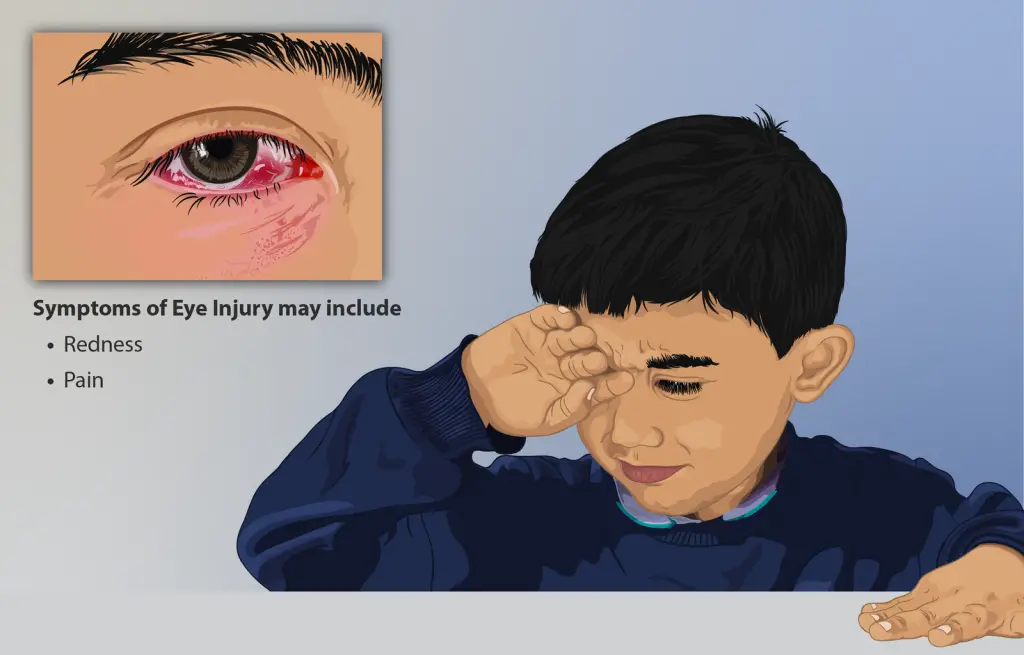
Flying sparks and spatter can also cause eye injuries. This is why we tend to prefer safety glasses with side shields. Instead of an opening on the sides of the safety glasses, there is additional plastic which helps prevent sparks from traveling into your peripherals. Even if you’re not the one welding, a coworkers sparks can fly at you without you noticing.
It should also be noted that wearing safety glasses under your welding hood is a wise choice. Sparks have their way of coming into your hood, and they’ll start bouncing around inside of it. This can be very dangerous for the welder, and it’s always nerve racking when it happens. If you tend to weld outside or “in the field” a pair of sunglasses under your hood can also work well.
Once you get into the habit of wearing these glasses, it shouldn’t bother you too much. Staying on the safe end of the spectrum is a wise choice: If our shift is 8 hours long, we’re wearing them for 8 hours (besides lunch break).
Ear Injuries
While earplugs are most commonly worn to protect your hearing, they also have another use. The sparks and flying slag mentioned above can also find their way into ear canals. Although this is less common, it can be extremely painful and damage the ear canal or even the ear drum.
So as welders, we always wear ear plugs for 2 reasons: Protecting our long term hearing from the grinders, hammers, tools etc. – and for preventing burns in the ear canal.
Long term exposure to the loud sounds produced by welding tools can be devastating to your hearing. Especially working in the confines of a fabrication shop, many older welders will find that their hearing has seriously diminished over time. If you’re a young welder that wears ear plugs on the job, it is a great habit to keep up throughout the rest of your career.
Ear plugs are an extremely affordable piece of PPE, so there really isn’t an excuse that welders shouldn’t wear them. Many employers and job sites will even provide them for their workers.
Hot Metal/Carelessness
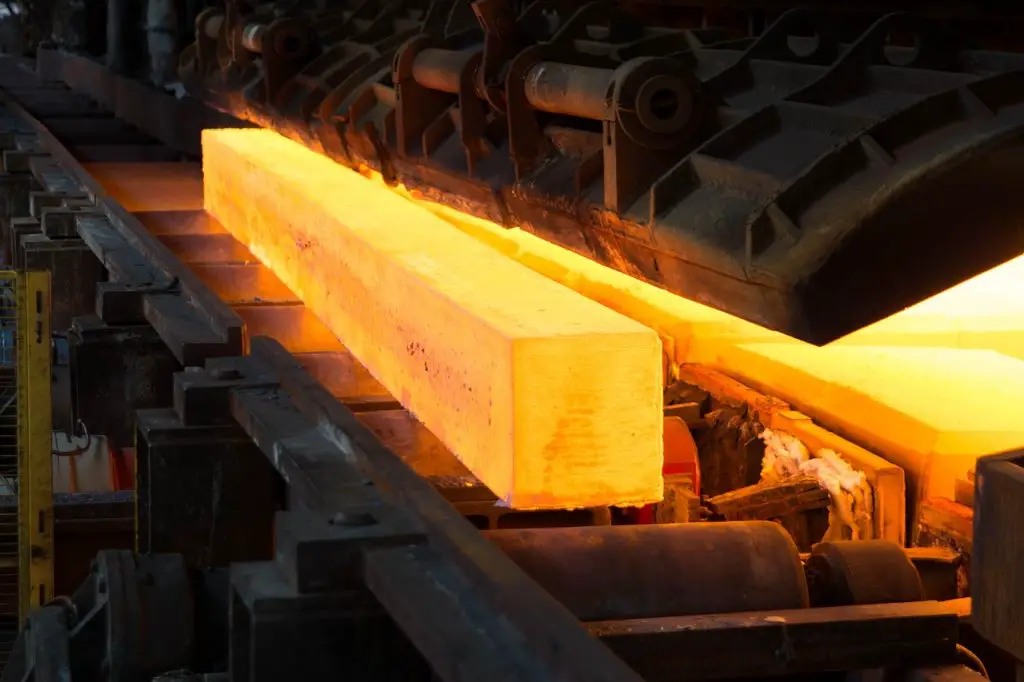
Steel and aluminum heats up extremely fast during and after a weld is performed. Often times welders will accidentally touch a piece of material before it has had the chance to cool down. This is a classic mistake – just like touching a hot pan or a pot while cooking at home.
Aluminum can be especially dangerous. It doesn’t change color when it gets hot, so you can never be too careful. Steel tends to get red or smoke when it reaches super high temperatures, but aluminum looks the exact same.
When these burns happen, the burn is often a 3rd degree wound just because of the extreme temperature of the material. This is why we always wear our gloves whenever we are touching metal – it could be sharp or it could be scalding hot. Always play it safe and never touch steel with bare hands.
Fumes/Lung Damage
Welding over a long period of time can seriously affect the nervous system in general. The different oxides found in welding fumes are harmful to the human body in many ways. We aren’t scientists or doctors, but we know that many welders have gotten COPD in their later years.
Just like smoking, one time isn’t going to kill you – but repeated exposure can cause problems down the line. This is why it is recommended to wear a respirator and weld in a well ventilated area. Over time, iron deposits can build up in the lungs and cause breathing complications. The fumes entering the body can also negatively affect the immune system, which can lead to getting sick more often.
This is definitely something to consider if you want to choose welding as a career path. It can be extremely rewarding, but it can also compromise your future self. A desk job is definitely safer, but we find the rewards of welding make it worth the risk.
Heavy Objects
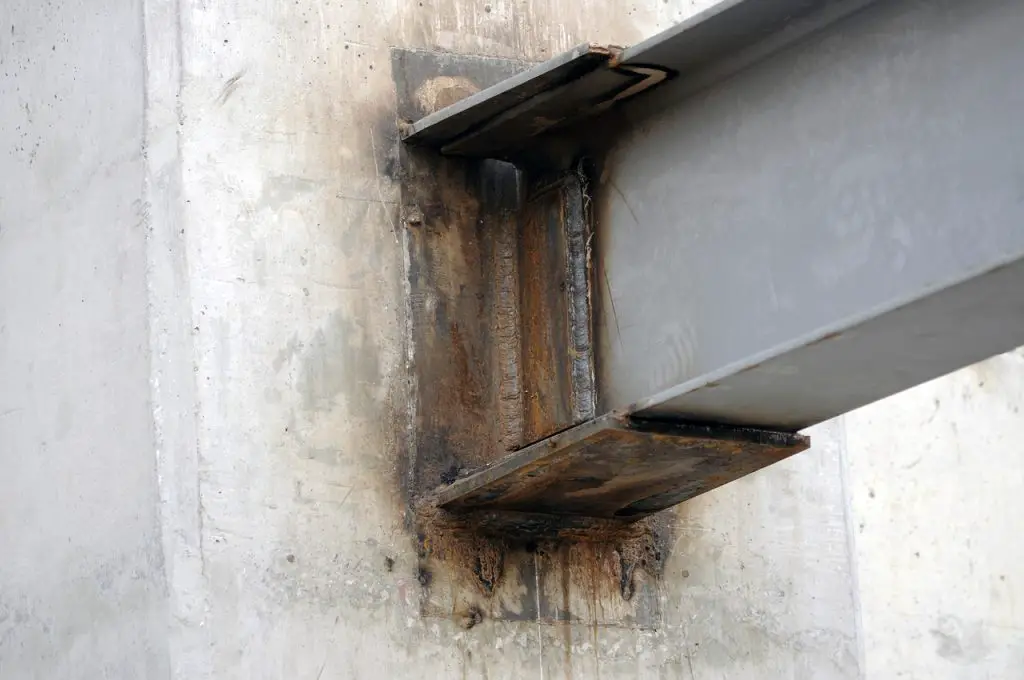
Steel is a very heavy alloy. Welders working with large beams and pipe are at more of a danger than welders working on smaller projects. Having a beam fall on you can be deadly, and this has happened plenty of times in the ironworking industry. Even a small beam drop can shatter a foot or a toe on the job site.
Safety protocols are in place on job sites and in fabrication shops, but accidents do happen. If you plan on becoming an ironworker or a heavy pipe welder, make sure to follow all safety precautions and follow proper rigging techniques.
The veterans that have been doing it for years should be fine to show you the proper methods of rigging and installing these larger pieces of steel. If you enter the ironworkers apprentice program, you’ll learn all of the safety measures very thoroughly.
Fire
Although welding itself doesn’t produce fire, it can definitely cause a fire to start. The sparks and spatter can easily catch on a cloth or piece of clothing. A trash can nearby filled with flammables or paper can also cause problems as well.
When setting up your work area, make sure that there are no fire hazards in the immediate area. It is always good to have an extinguisher nearby incase of a fire emergency. In the case of welding in the field (outside), fire extinguishers become even more important and must be near you at all times. Often times another worker will stand by the welder as a “fire watcher” and will extinguish a flame before it can spread.
This is paramount in rural areas where there are lots of plains/trees/wood etc.
Electric Shock
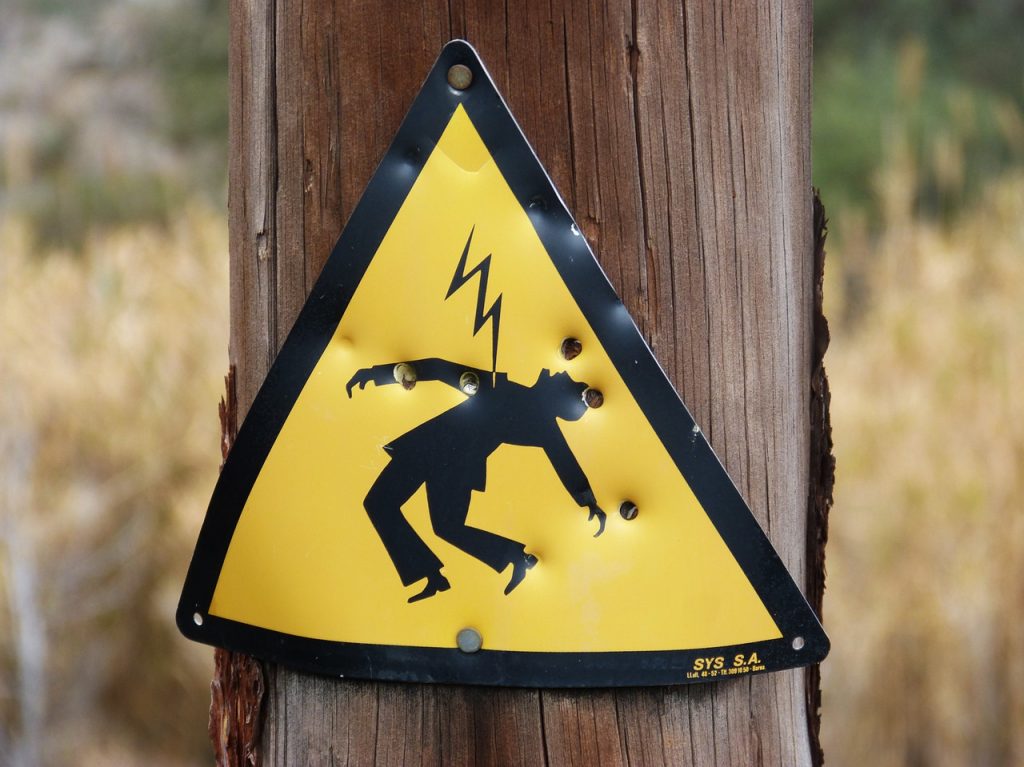
Even though this is more rare, bad electrical shocks can happen while welding. This usually happens when it is raining or snowing, and the arcs electricity spreads and shocks the welder.
This is why it is advised to avoid welding in adverse weather conditions. If there is a puddle nearby or the steel is wet, this can cause terrible dangers. Wet welding gloves can cause these issues as well. Shop welders don’t have to worry as much about this, but they should make sure that their fabrication table is always clean and dry.
Welding leads and cables should be checked frequently for signs of cuts and fraying. Exposed copper wire inside of welding leads will make a shock much more likely. A heavy application of electrical tape can solve this issue, or the leads can just be replaced altogether.
Wrap Up
Most of these 9 welding hazards are pretty straightforward. It really comes down to common sense and being aware of your surroundings while on the job. It is important that every employee follows safety protocols, because one careless mistake can put multiple people in danger.
Knowing how to properly use tools and machines is also a big part of this. Often times, newer employees will jump on a piece of equipment that they don’t know how to use. This is very dangerous and should be avoided. “On the job training” is very important in the world of welding.
If you are curious what kinds of welding PPE is necessary to stay safe, you can check out our welding gear guides here.
Featured image credit : Wikimedia Commons

